While some of you may be familiar with Khao Sok, we believe many haven’t had the chance to discover this enchanting destination. Let’s delve into all you need to know about Khao Sok National Park, a true hidden gem.
Located in the Surat Thani region of Thailand, Khao Sok was declared the country’s 22nd national park in 1980. Nestled 120 km away from Surat Thani city, it sits along the route between Phuket and Khao Lok. Now, let’s embark on a virtual journey through the wonders of Khao Sok National Park.
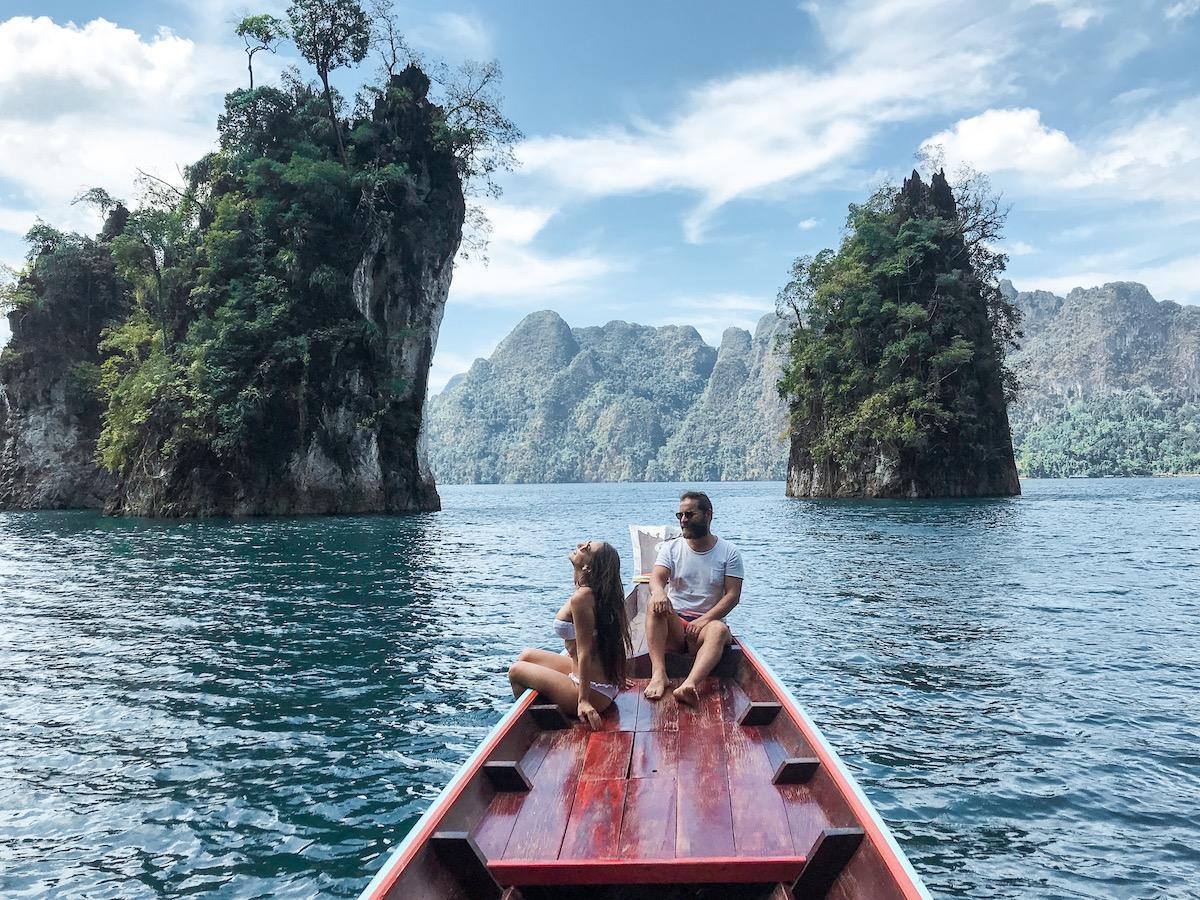
Khao Sok: A Glimpse into the Enchanting World of the Oldest Rainforests
Khao Sok is home to one of the world’s oldest rainforests. Embarking on a journey from the city of Surat Thani, after just a half-hour drive, you find yourself stepping into the magical realm of greenery. The scenery outside becomes so mesmerizing during this journey that it’s nearly impossible to take your eyes off the window.
Everywhere you look, lush greenery and mountains surrounded by limestone formations paint the landscape. While Khao Sok bears similarities to the beauty of Vietnam’s Ha Long Bay, El Nido in the Philippines, or Krabi in Thailand, it possesses its own unique charm.
Before delving into the details of our exploration, we believe it’s essential to provide a brief insight into what this place is like.
WHAT IS A RAINFOREST?
A forest that receives a minimum of 2000 mm of annual rainfall is referred to as a rainforest. Abundant rainfall contributes to the dense vegetation cover found in these forests. Throughout the year, some trees in the forest shed their leaves, while others remain evergreen. This characteristic enables rainforests to maintain their continuous greenery. In fact, they are recognized as some of the world’s largest rainforests. Due to the dense forest cover, only a mere 1% of sunlight reaches the forest floor, resulting in rainforests being quite dark. Additionally, the temperature variation in tropical rainforests fluctuates by only 2-3 degrees along the forest floor.
Spanning over 739 km2, Khao Sok holds a superior distinction as it is not only older than the Amazon rainforest but also boasts greater biodiversity. Out of the 739 km2, 165 km2 is comprised of the man-made Cheow Lan Lake. The lake was constructed in 1982 by the Thai government as a hydroelectric power source, leading to the evacuation of five villages within the designated lake area. Today, these villages are submerged beneath the lake.
The annual precipitation in the National Park is 3500 mm.
Additionally, the National Park harbors approximately 5% of the total global animal species.
The composition of the National Park is as follows:
- 40% hill forest
- 27% plain
- 15% limestone rock vegetation
- 15% low shrubland
- 3% 600-1000 m rainforest
Flora and Fauna
Due to being a rainforest, special species of animals and plants are found. the National Park is home to unique species of animals and plants. Some of these include the Buttress Roots tree, the world’s largest flower known as Rafflesia, the carnivorous Pitcher Plant, the Liana tree, and the Dipterocarp tree (Dipterocarp refers to fruits with two wings, and the fruits of this tree can visit other trees).
Among mammals, there are clouded leopards, tigers, leopards, and Malayan bears.
In terms of bird species, there are a total of 311 different types of birds. Some of these include the Buffy Fish owl, barred cuckoo, yellow-bellied bulbul, Chinese pond heron, drongo bird, and tailorbird.
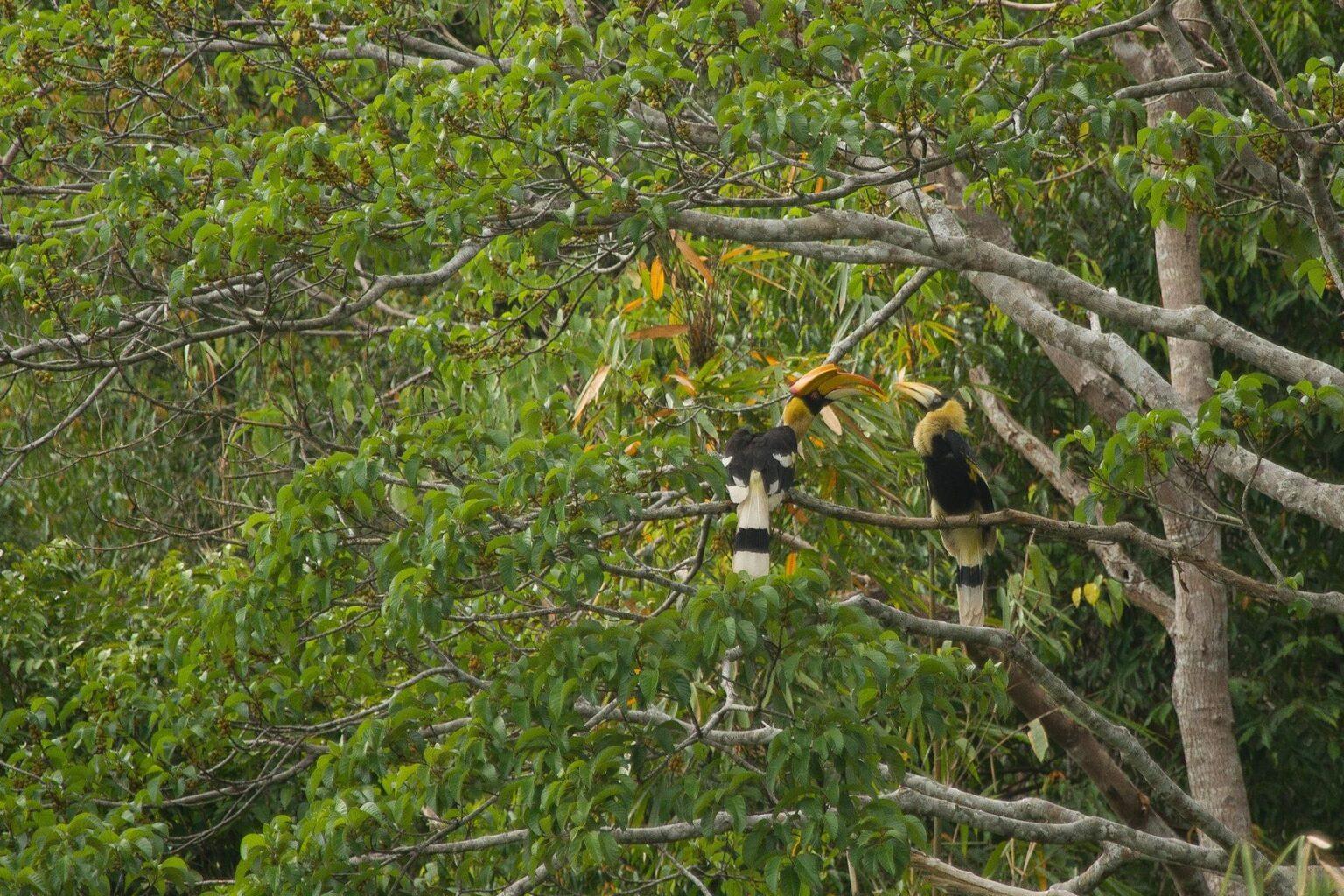
Insect Species: centipedes, scorpions, tarantulas, cicadas, mantises, atlas moths, and more.
Reptiles and Amphibians: Thailand boasts 170 species of snakes, with 48 of them being venomous. Many of these snake species, including cobras, are found in Khao Sok.
It is estimated that the National Park is around 160 million years old, and its formation can be attributed to tectonic movements, climate changes, and erosions.
Millions of years ago, when this area extended from China to Borneo, it took its present form as a result of the collision between the Indian and Eurasian plates, giving rise to the Himalayas. The limestone formations seen in and around the National Park were also pushed upward as a result of this collision. Rivers formed by melting glaciers and numerous waterfalls now bring life to this region.
If you, like us, love nature, as you approach Khao Sok National Park, your first words will likely be, “This is the place I’ve been looking for.”
One of the aspects we love about Thailand is their commitment to nature. Along the Khao Sok road, excluding occasional road expansions, it consists of only two lanes for round-trip travel. It’s impossible to spot tall buildings along the way. Hotels, one or two stories high, are discreetly built completely immersed in nature.
We couldn’t understand why Khao Sok isn’t as touristy as other islands and cities in Thailand. Well, having fewer tourists is actually a good thing. More tourists would mean more hotels, more restaurants, and more travel agencies to meet the demand. In our opinion, Khao Sok has preserved its pristine beauty because it is not widely known or recognized.
When we look at the demographic of visitors, it’s a region preferred by tourists of all ages, especially Europeans, from 7 to 70.
TOP THINGS TO DO IN KHAO SOK NATIONAL PARK
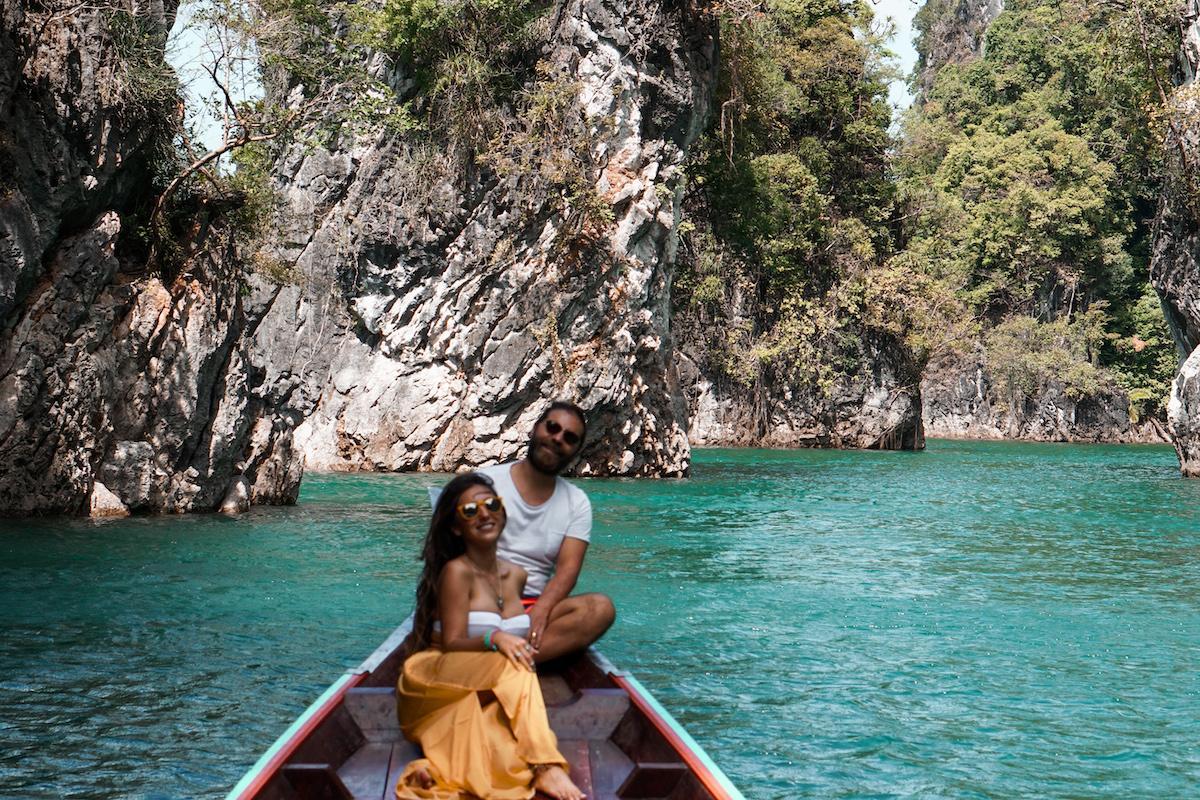
Make sure to visit a rainforest at least once in your lifetime. Therefore, one of the most delightful activities to experience in the forest is taking a canoe tour on the Sok River, participating in morning or night treks in the jungle, visiting the elephant orphanage for a mud bath with the elephants, and taking a boat tour on Cheow Lan Lake.
Believe us, each of the activities we’ve listed will be among the most beautiful moments you’ll ever experience. The region is truly a paradise for nature lovers. We believe that no one who comes here will leave disappointed. Even if you do nothing else, taking a walk within the park will be enough to make your day beautiful.
KHAO SOK NATIONAL PARK
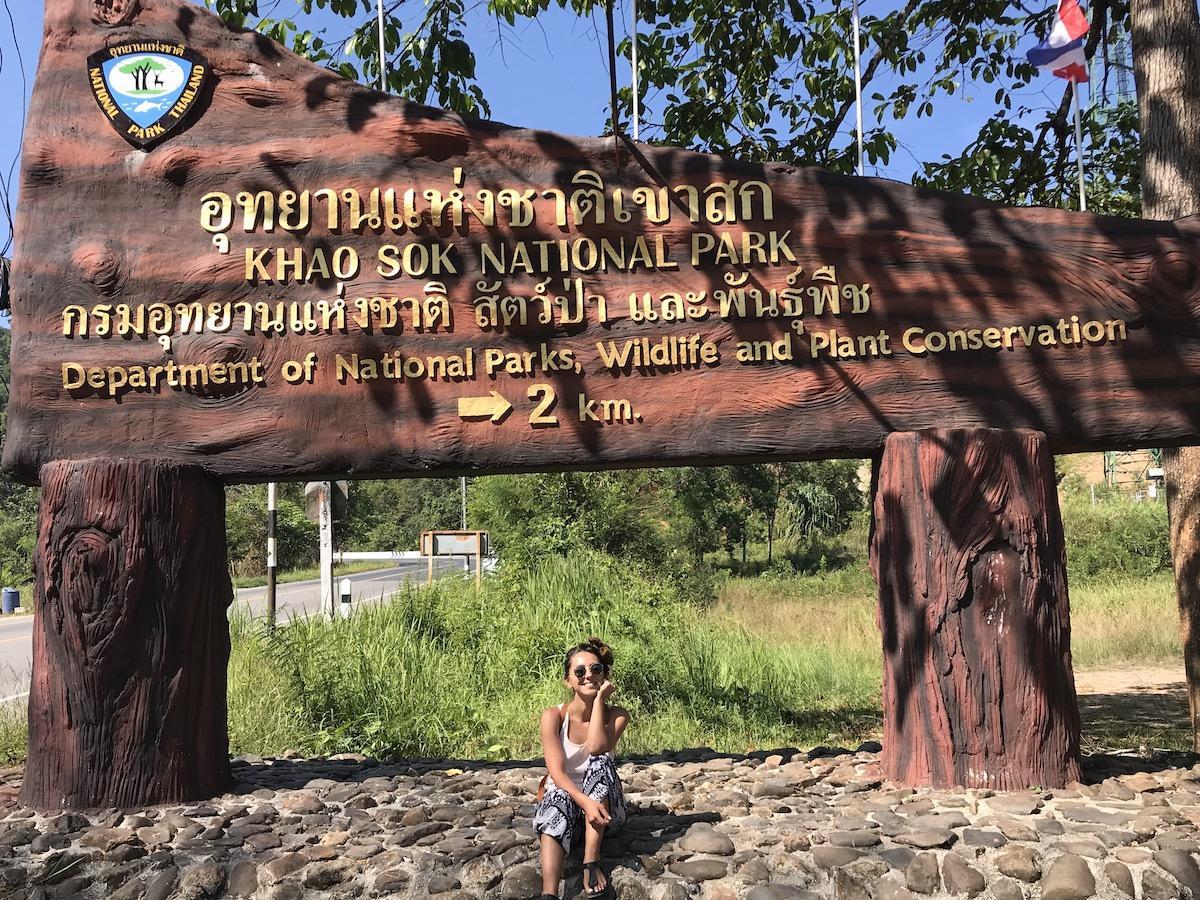
Don’t forget to take a walk in the rainforest within the national park. If you’re not taking a guide with you, you can explore a total of 7 km of trails (round-trip) without a guide.
If you opt for guided trekking on specific routes, the national park management at the park entrance can assist you with a guide. Keep your eyes wide open during trekking because the likelihood of seeing the world’s largest flower, Rafflesia, is very high. However, catching it in bloom is purely a matter of luck . Another option to purchase the tour is from the hotel where you are staying.
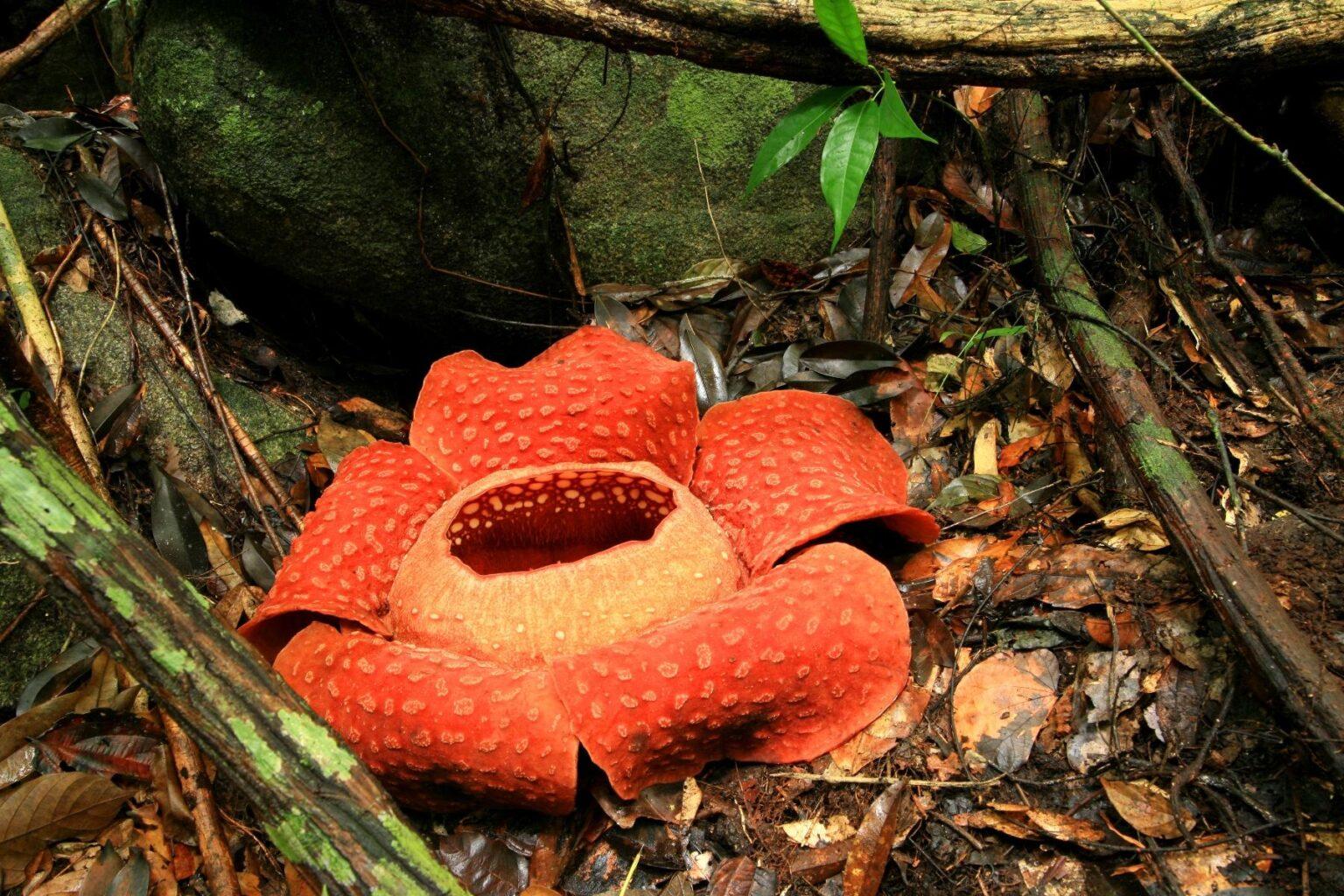
You can cool off at the Ton Kloi, Than Sawan, and Sip Et Chan waterfalls along the popular hiking routes in the park.
Those planning to hike in the National Park should definitely bring drinking water with them. Also, avoid carrying a heavy backpack as it can be challenging during trekking.
If you plan to hike without a guide, make sure you have downloaded the maps.me offline map application and that your phone is fully charged.
National Park entrance fee: 300 THB (as of 2023). If you are going to purchase a tour package, the entrance fee may be included in the price. You can confirm this in advance. For additional information about the National Park and details about tours, you can visit the official Khao Sok website.
CHEOW LAN LAKE BOAT TOUR
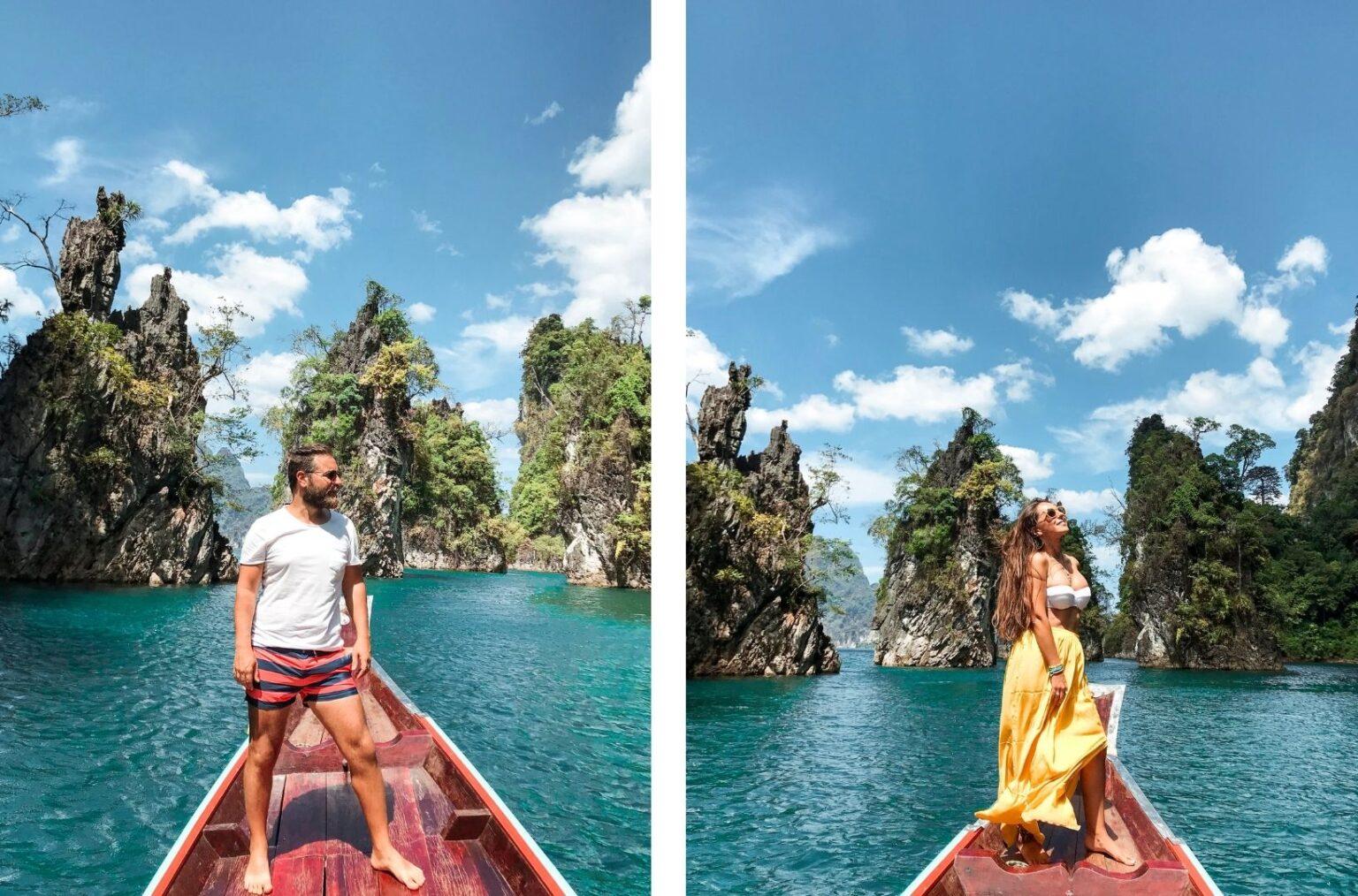
Make sure to take a boat tour on Cheow Lan Lake. If you have the time, consider staying overnight in the lake’s floating bungalows, immersing yourself in the heart of nature. Experience a day away from the ordinary, and witness an indescribable sunrise.
There are three ways to get to Cheow Lan Lake:
Purchase a package tour from tour companies: This option includes all transportation, national park entrance fees, and a boat tour. The cost per person starts from 1500 Baht.
Opt for an overnight tour: Tour companies can arrange this for you, with prices starting from 2500 Baht. The tour fee does not include the 300 Baht national park entrance fee. Included in the package are all transfers, accommodation, 2 breakfasts, 2 lunches, 1 dinner, morning and night boat safaris, a 3-hour trekking tour, and a cave visit.
Go independently: We also chose this route. Renting a motorbike from the town of Khlong Sok where we stayed, we traveled 60 km. After reaching the National Park, we paid the entrance fee of 300 Baht per person and negotiated for a boat. We paid 1700 Baht for a 3-hour private tour, as there was no one else with us. However, if you don’t want to pay this fee, you can share the boat with others. Since the boats accommodate 6 people, if you join a full boat, the cost per person will be much more affordable.
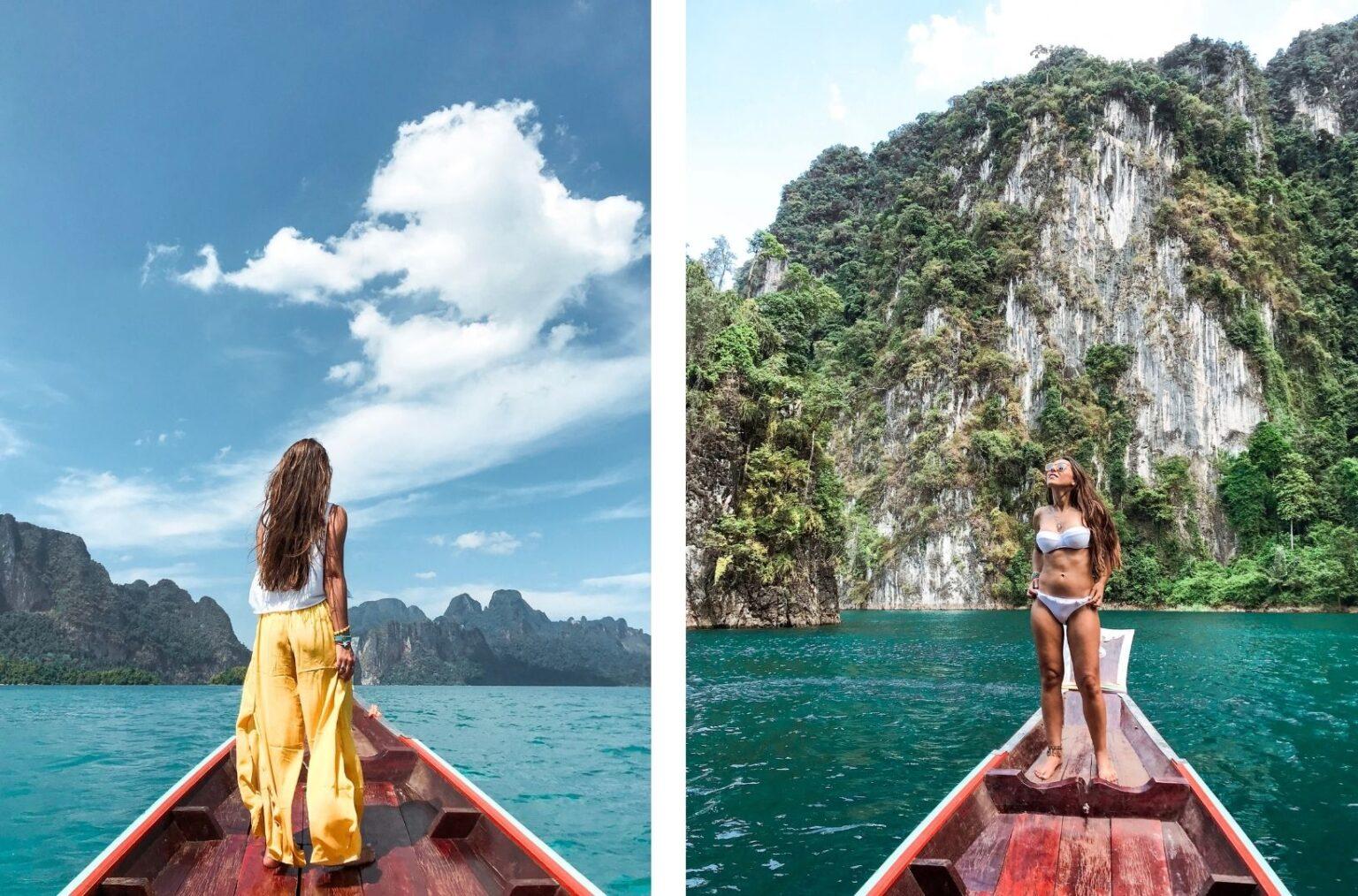
While it may seem convenient to purchase from a tour company and have everything arranged for you without the hassle, we particularly didn’t choose this path. This is because exploring Thailand on a motorcycle and stopping wherever we please to discover different places is our favorite thing to do. If you feel that there’s no need for an adventure, you can buy the Cheow Lan Lake tour from the agencies in Khlong Sok.
Our recommendations for bungalows on Cheow Lan Lake:
- Smileys Bungalow
- The Floating Bungalows
- Panvaree Resort $$ (Moderate)
- Keereetara $ (Budget-Friendly)
- 500 Rai Floating Resort $$$ (Luxury)
KHAO SOK ELEPHANT SANCTUARY – BATHING WİTH ELEPHANTS
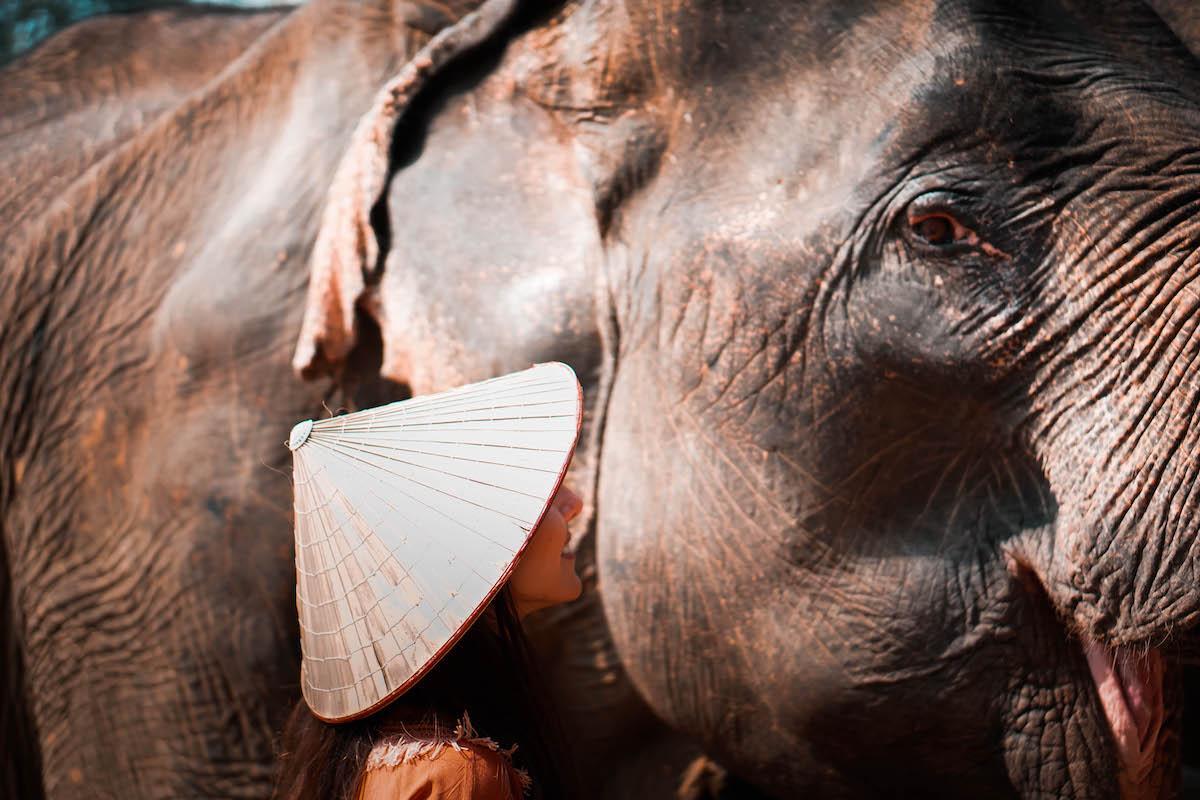
Khao Sok Elephant Sanctuary is an official park where elephants in the wild, especially those in danger or without mothers, are protected. Perhaps we spent some of the most enjoyable hours of our lives here. As participants, there were a total of 6-7 people in our group. Although there were two kids in the group who were more curious than us, we must admit that we had more fun than them
We contacted them via the phone number we obtained from the elephant sanctuary’s website, expressing our desire to participate. They picked us up from the address we provided and dropped us back at the end of the tour. If you’re planning to go, you can do it just like we did. If you don’t have a phone to call, you can also communicate via email. They are very responsive and always provide a prompt response.
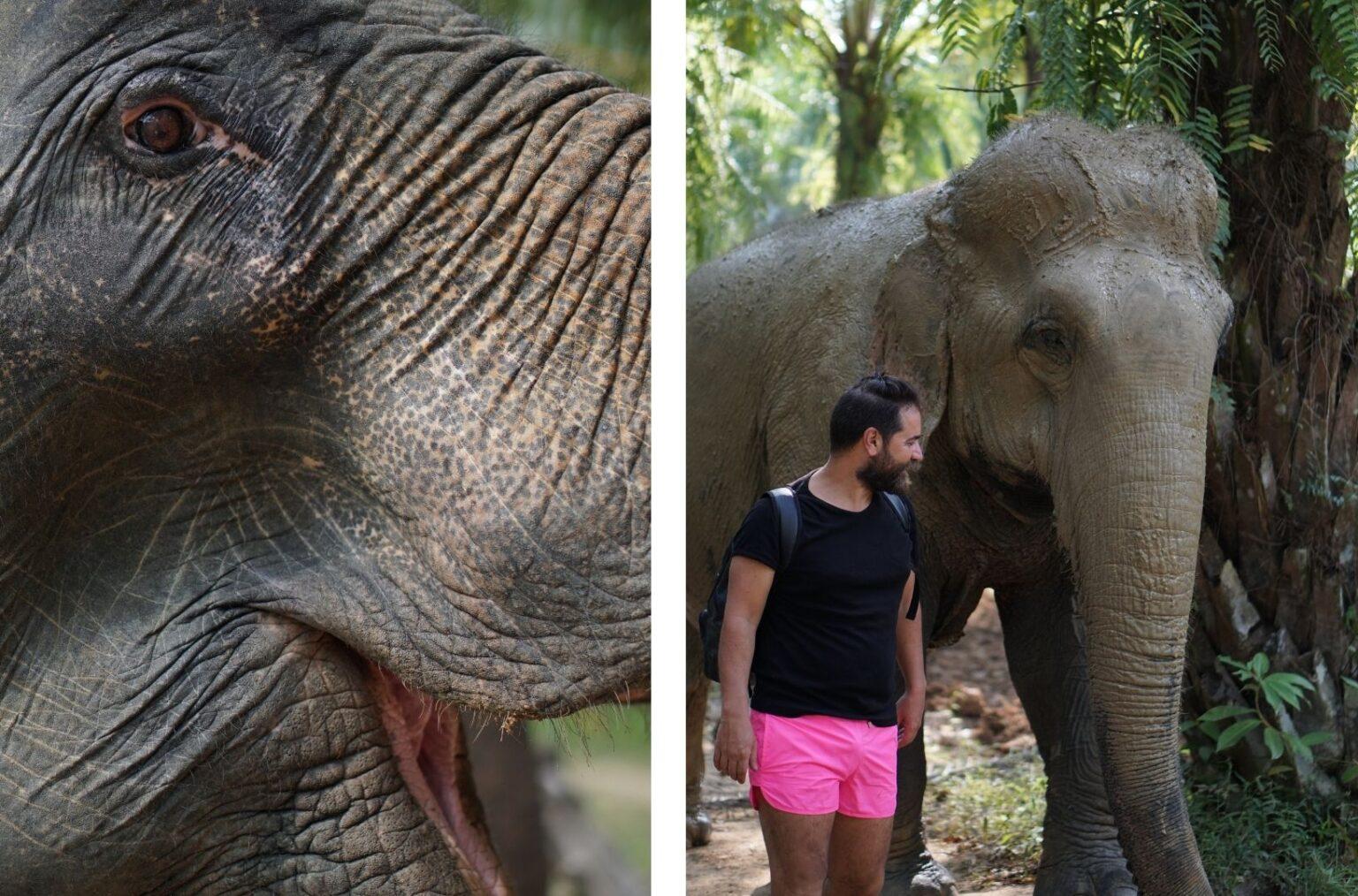
While bathing with the elephants, I had placed my GoPro on the ground and, naturally, forgot about it. I realized this later and immediately sent a message, informing them of where I left my phone. Within half an hour, they brought the device back to the hotel. They have very attentive and friendly staff. Initially, our plan was to visit an elephant sanctuary in Chiang Mai. However, due to its touristy and crowded nature, we decided to use this opportunity in favor of Khao Sok. And we are so glad we did!
We spent two full days in Khao Sok. It was a place where we said, “I wish we had more time and stayed for four days.” But we made a promise to ourselves. On our next trip to Thailand, we’ll find our way back here.
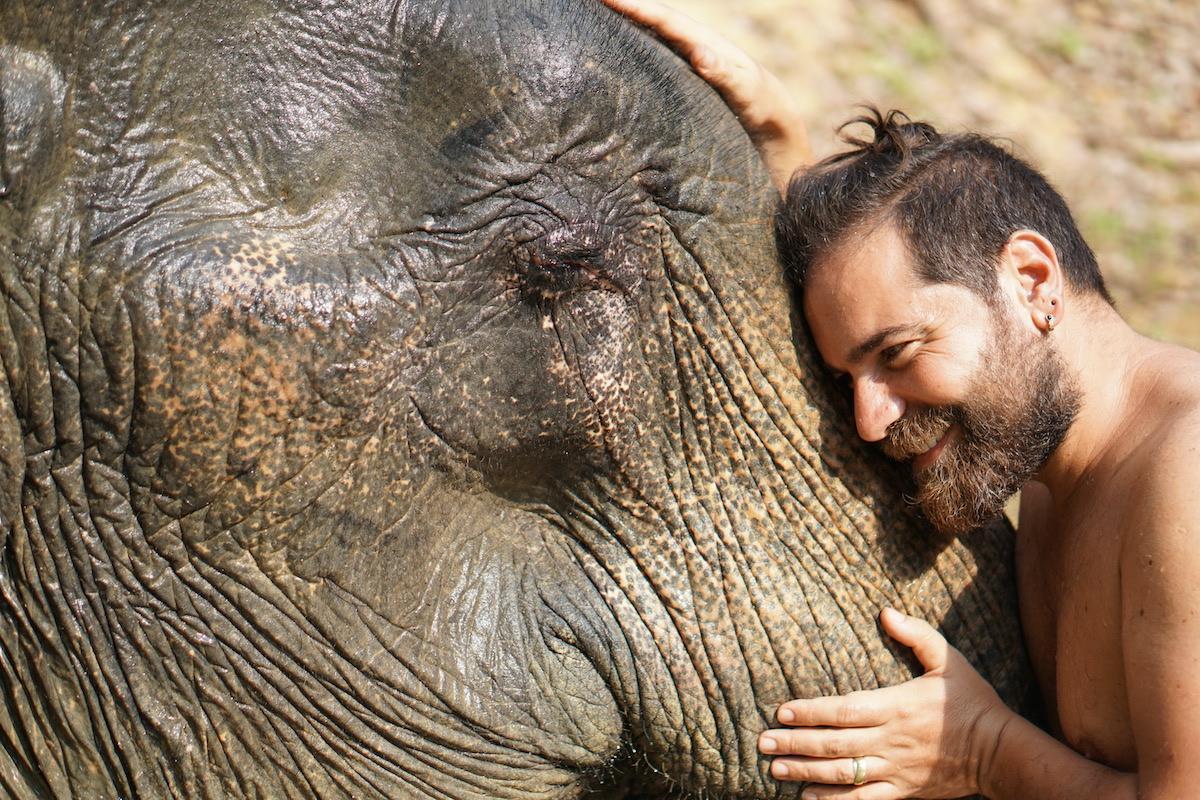
If all the recommendations we’ve given so far and the experiences shared based on our advice have left people satisfied, believe us, we can give the same recommendation for Khao Sok.
If you’re planning a trip to Thailand, please set aside a few days and visit Khao Sok National Park.
HOW TO GET KHAO SOK NATIONAL PARK?
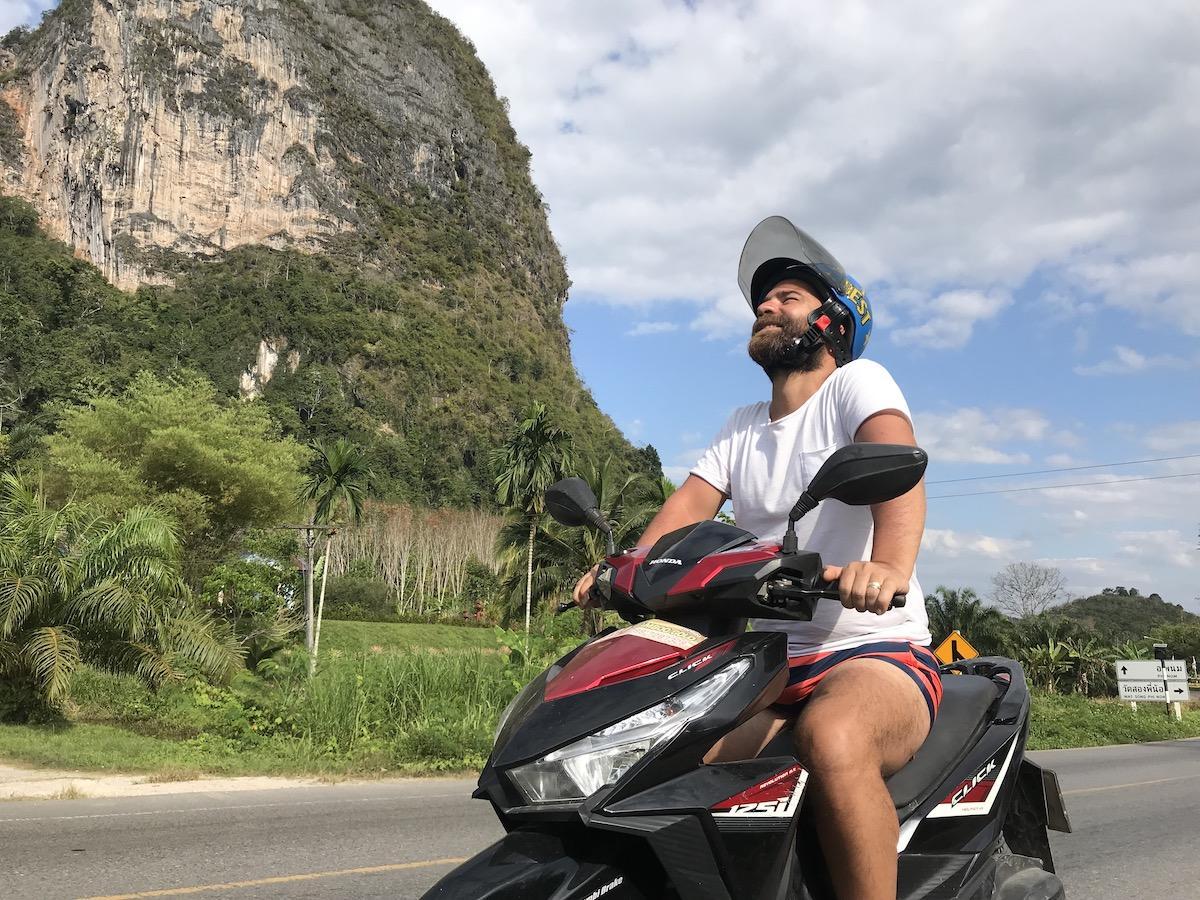
Located 730 km south of Bangkok,
58 km northeast of Khao Lak,
153 km north of Phuket,
and 128 km west of Surat Thani,
you can easily reach Khao Sok National Park from Phuket, Krabi, or Khao Lak. If you’re coming from other places (such as Bangkok, Chiang Mai, Trat), the most practical way is to go to Surat Thani.
After reaching Surat Thani, you can get to the entrance of Khao Sok National Park in approximately two and a half hours by public buses heading to Phuket or minivans heading to Khao Sok.
Transportation cost from Surat Thani to Khao Sok: 120 THB (as of January 2019). The updated transportation cost in 2023 varies between 7-10 USD.
You can securely purchase your bus tickets online from the 12go.Asia website. It is the transportation platform we trust the most and frequently use during our travels in the Far East.
Transportation from Phuket and Phi Phi to Khao Sok:
If you’re coming directly from Phi Phi Island, you should first take a ferry to Phuket.
From Phuket to Khao Sok National Park, you have options such as buses, minibusses, and taxis. The journey takes approximately 2 hours.
Transportation from Koh Samui, Koh Phangan, and Koh Tao to Khao Sok:
No matter which island you come from, the ferry will take you to the Don Sak pier, located 64 km from Surat Thani. Upon arriving at the pier, you can go to the bus terminal in Surat Thani city center, purchase a bus ticket, and reach Khao Sok National Park in about 2 hours.
If you don’t want to waste time, you can arrange your transfer in advance. As soon as you arrive at Don Sak pier, you can quickly reach Khao Sok with a waiting vehicle or minivan. The journey from Don Sak pier to Khao Sok takes 3 hours. If you plan to arrange your transfer in advance, you can search and purchase your ticket from the 12Go.Asia website by looking for “Don Sak Pier – Khao Sok.”
Transportation from Krabi to Khao Sok:
You can comfortably reach Khao Sok with minivans providing direct transfers from Krabi. Paying approximately $11 per person, you’ll have a journey of 3 hours and 40 minutes.
We traveled to Khao Sok from Kanchanaburi. Originally, our plan was to take buses from Kanchanaburi to Bangkok, then take a train from Bangkok to Surat Thani, and finally take buses to reach Khao Sok, which is 120 km away.
When we found a train from Kanchanaburi to Surat Thani, we decided to go directly by train without extending the journey. After getting off at Surat Thani train station, we took the Phuket bus that departs right across the road and got off at the entrance of Khao Sok National Park. Our travel time was 8 hours from Kanchanaburi to Surat Thani by train and approximately 2-2.5 hours from Surat Thani to Khao Sok.
Regardless of where you’re coming from, buses will drop you off at the Khao Sok intersection. As you enter the main street from this intersection, you’ll find restaurants and hotels on both sides. If your hotel is a bit far from the intersection, you can hire transportation one by one from here.
If your accommodation provides transfer services and you inform them of your arrival time at the Khao Sok intersection in advance, they will come and pick you up from there.
WHERE TO STAY IN KHAO SOK NATIONAL PARK?
Accommodation options offer a variety for every kind of traveler looking to enjoy the natural beauty. You can choose between two main accommodation areas: the overwater bungalows on Cheow Lan Lake and the town of Khlong Sok. Here are some recommendations for staying in these areas:
Accommodation in Khlong Sok Town:
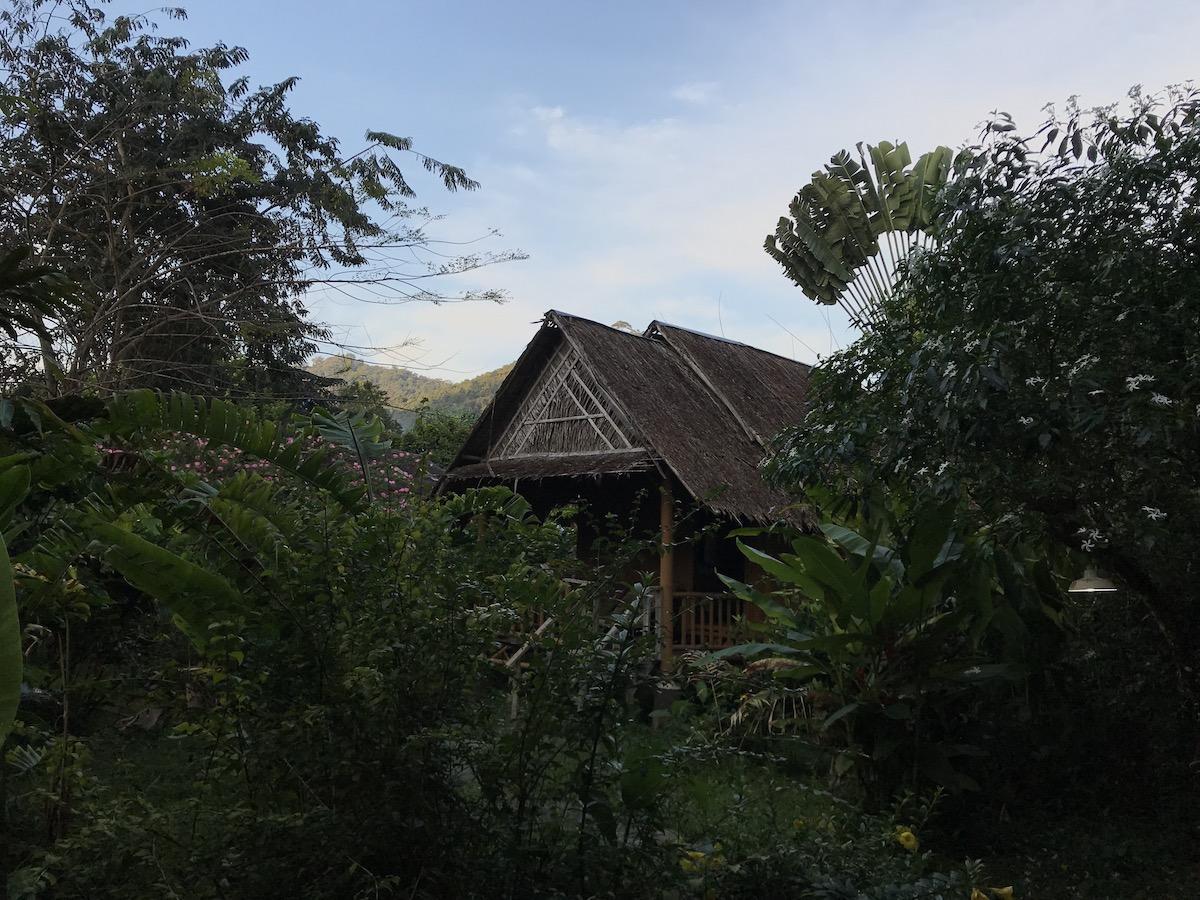
Khlong Sok town is located near the entrance of Khao Sok National Park and provides numerous accommodation options. We chose to stay at Khlong Sok Morning Mist Resort. Even though we didn’t make a reservation, it was an excellent choice for us with its clean rooms, pool, and restaurant. Additionally, being within walking distance to the Khao Sok River and the national park offered an immersive experience with nature.
If you’re looking for a more authentic accommodation experience, we can recommend Our Jungle Camp – Eco Resort. This hotel offers meals prepared with fresh farm ingredients in its restaurant. Additionally, being located by the river, you can enjoy magnificent views from all rooms.
Accommodation in Overwater Bungalows on Cheow Lan Lake:
Staying in overwater bungalows on Cheow Lan Lake provides a magnificent experience in the middle of the lake for those seeking a tranquil stay amidst nature. If you are considering staying in a treehouse, Our Jungle House is a fantastic option. In addition to their regular rooms, they also have treehouses. The treehouses have elegant decor and are exceptionally clean.
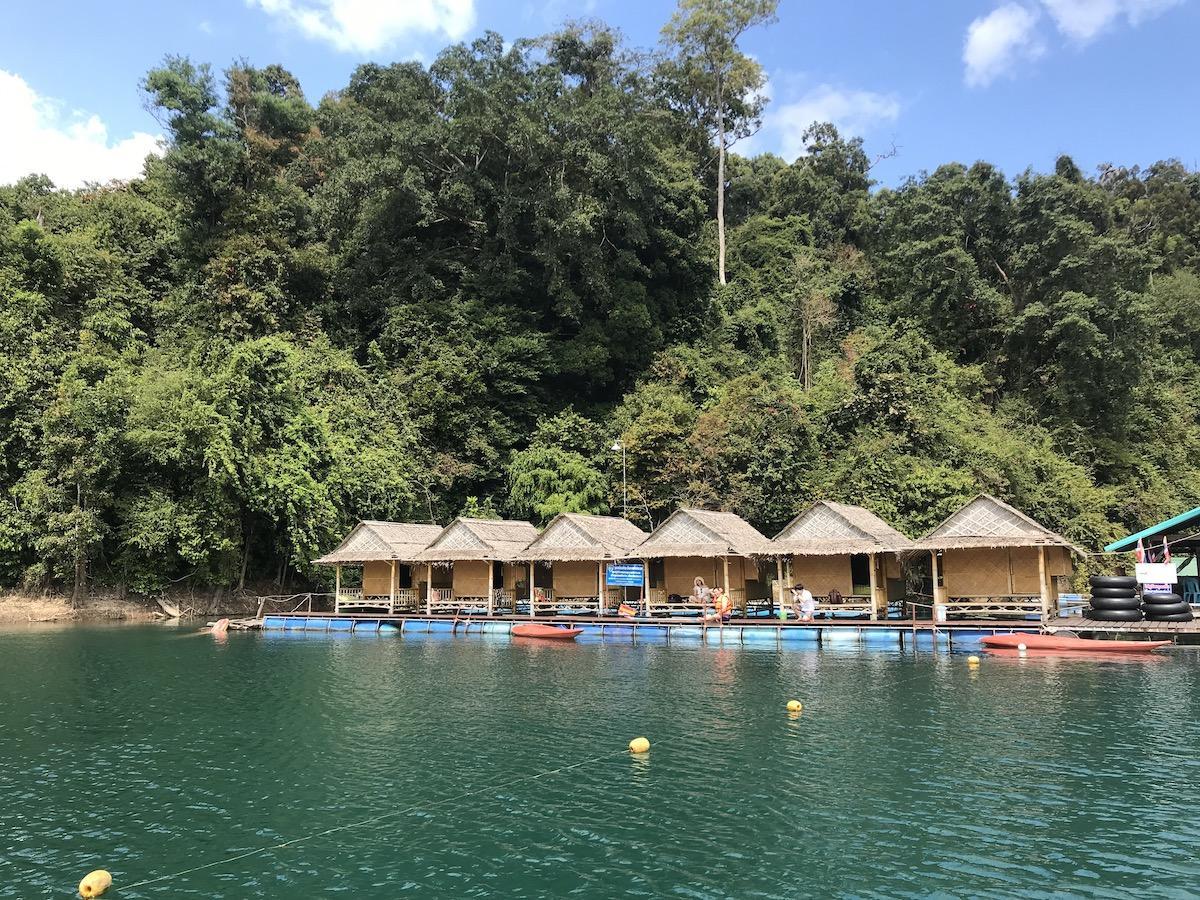
Accommodation options are diverse, and it’s possible to find a place that suits your personal preferences and budget. Both regions offer unique experiences and provide comfortable accommodation options while exploring the natural beauty of Khao Sok.
WHEN TO GO KHAO SOK NATIONAL PARK?
Khao Sok’s climate undergoes changes throughout the year. Here is more information about the seasons and weather in Khao Sok:
Rainy Season (May – November):
The rainiest period falls between May and November. During these months, the region experiences abundant rainfall, and the showers can be frequent and intense. This period marks a time when the natural environment comes to life, and the vegetation turns vibrant green. Forests thrive, and water sources like Chiew Larn Lake overflow. However, due to the heavy rainfall, trekking and outdoor activities may sometimes become challenging.
Dry Season (December – April):
The dry season starts in December and continues until April. During this period, rainfall decreases, and the region becomes drier. However, it may not be entirely devoid of rain, with occasional light showers, so it’s essential to be cautious. The dry season is more suitable for outdoor activities, making it an ideal time for trekking or water activities on the lake.
Temperature:
The hottest months are May and April, with temperatures reaching 30 degrees Celsius or higher. The average temperature throughout the year is approximately 30 degrees Celsius. While the climate is relatively stable, it’s worth considering that temperatures tend to be higher in May and April.
When planning a visit to this area, taking into account the seasons and weather conditions can help you adjust your activities and clothing preferences. The rainy season enhances the vibrancy of natural beauty, but the dry season may be more favorable for outdoor activities.
OTHER THAILAND ARTICLES
